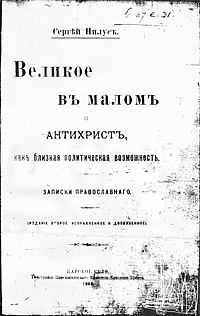
Photo from wikipedia
New York City drinking water quality depends on retention of forest cover in its Catskill Mountains watersheds, yet multiple published analyses of temporally approximate satellite imagery derived no definitive nor… Click to show full abstract
New York City drinking water quality depends on retention of forest cover in its Catskill Mountains watersheds, yet multiple published analyses of temporally approximate satellite imagery derived no definitive nor agreed upon quantification of either forest cover in the watershed, or, more importantly, its rate of change over time. The objective of this work was to reduce uncertainty surrounding these estimates. We developed a five-pronged protocol that included (1) creation of a 1975–2002 time-series of land use/land cover (LULC) using Cross-Correlation Analysis (CCA); (2) a corrective post classification logic-based algorithm to correct for illogical transitions; (3) a probability-based stratified random sample accuracy assessment; (4) joint probability calculations of the “true” 2002 class proportions; and (5) verification of quantities of our LULC classification, and those of other researchers, versus the statistically derived true proportions. The estimated true percent of forest cover as of 2002 is 72%, far less than that reported by other studies, even with a net reforestation between 1975 and 2002. This protocol is an enhancement over previous LULC monitoring methods. Its more robust estimates of both historic trends and 2002 forest cover reveal information that is vitally important to monitoring and managing future water quality for the nation’s largest city.
Journal Title: Environmental Monitoring and Assessment
Year Published: 2018
Link to full text (if available)
Share on Social Media: Sign Up to like & get
recommendations!